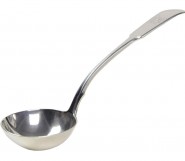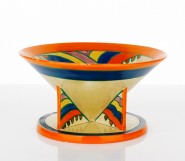Lot #50 - John Brack
-
Auction House:Deutscher and Hackett
-
Sale Name:100 Highlights from the Cbus Collection of Australian Art
-
Sale Date:27 Jul 2022 ~ 7pm (AEST)
-
Lot #:50
-
Lot Description:John Brack
(1920 - 1999)
Three Egyptian Women, 1975
oil on canvas
91.5 x 71.0 cm
signed and dated lower right: John Brack 1975; inscribed with title on artist’s label verso: Three Egyptian Women; bears inscription verso: 9 -
Provenance:Rudy Komon Gallery, Sydney; Private collection; Barry Stern Gallery, Sydney; Private collection; Christie’s, Melbourne, 11 April 1990, lot 163; The Cbus Collection of Australian Art, Melbourne, acquired from the above
-
Exhibited:"John Brack: Paintings and Drawings", Rudy Komon Gallery, Sydney, 13 – 31 December 1975, cat. 9; on long term loan to Newcastle Art Gallery, New South Wales, prior to 2006; on long term loan to Latrobe Regional Gallery, Victoria
-
References:Lindsay, R.," John Brack: A Retrospective Exhibition", National Gallery of Victoria, Melbourne, 1987, p. 129; Grishin, S." The Art of John Brack", Oxford University Press, Melbourne 1990, vol. l, p. 135; vol. ll, cat. o234, p. 31; Nainby, B., Stanhope, Z., and Furlonger, K.," The Cbus Collection of Australian Art", in association with Latrobe Regional Gallery, Melbourne, 2009, pp. 119 (illus.), 214
-
Notes:John Brack resigned from his position as head of the Melbourne National Gallery School at the end of 1968. With the promise of a monthly stipend (to be offset against annual sales) from the Sydney art dealer, Rudy Komon, he had the freedom to paint full-time and soon constructed a purpose-built studio at home. Brack’s first commercial exhibition with Komon was held in 1970 and the following year, he was awarded the Travelodge Art Prize. Also in 1971, a monograph by Ronald Millar was published, a further reflection of the significant place Brack and his painting now held in contemporary Australian art. In late 1973, Brack and his wife, Helen, left Australia for the first time. With plans to travel in England and Europe for two months, Brack painstakingly planned their itinerary, ‘down to the specifics of street maps and detailing individual paintings that would form cultural" targets". ’1 While the experience of visiting great historical cities and seeing works of art known up until then only in reproduction left Helen buoyant, John however was overwhelmed by the loss of control he felt in such unfamiliar surroundings.2 It took some time for the impact of Brack’s travels to emerge in his art, but when it did, a year or so later, his audience was confounded. The social commentary that had been such a consistent feature of his work was gone, as was the human figure. These elements were now replaced with precarious arrangements of cutlery, pencils and postcards depicting artworks and artefacts from ancient cultures, carefully reproduced in paint. Sandra McGrath typified the cool response of many to this new imagery, writing in the" Australian" newspaper that ‘Brack’s work celebrates an intellectual rather than an emotional approach to life and art. It’s a unique vision and puts him outside the mainstream of Australian art.’3 Titled the" Unstill Life" series, these paintings were the result of intense preparation and a meticulous technique. Setting up elaborate tableaux in his studio – using fishing line and tape to suspend actual cutlery, postcards and other items to create a model from which he would make a detailed preparatory drawing – Brack also used fine brushes and glazes to minimise the appearance of brushstrokes and heighten the sense of pictorial realism. His aim was to engage viewers by these means, so that they could focus on the meaning of his imagery rather than being distracted by painterly bravura.4 Here, a complex arrangement of knives, forks and spoons supports a trio of museum postcards featuring the three Egyptian women of the title – a highly-coloured painting, a headless sculpture and a ceramic fragment depicting a figure in a dramatic gymnastic pose. The dark, irregular border surrounding the scene became a familiar element of the late works, highlighting the illusionistic nature of painting and pointing to the possibility of other realities; to something beyond the surface. As Helen Brack observed, ‘The margins here are very important, because they are about the dark past, other ages. He was extremely interested in how you can use structure to say what you want to say.’5 While the intended meaning is open to interpretation, the focus on female subjects is significant – a husband and father of three daughters, Brack was surrounded by women. As Sasha Grishin has noted, this and other related postcard paintings also explore notions of artistic authenticity, as well as stability and permanence, both in relation to art and society.6 These paintings weren’t entirely without precedent in Brack’s oeuvre – familiar, everyday objects such as cutlery and scissors had been prominent in earlier works such as "Knives and Forks", 1958 (private collection) and the shop window paintings of the early 1960s. Similarly, images of works of art had been incorporated into 1950s paintings such as "The New House", 1953 (Art Gallery of New South Wales), where the Van Gogh reproduction hanging on the lounge room wall alludes to the social and cultural aspirations of the home’s young owners.7 Brack always used complex symbolism to imbue his imagery with meaning – aiming to make ‘some sort of comment, but … never the sort of comment that could be put into words’8 – and his focus was inevitably the flaws and foibles of human behaviour. In the late paintings Brack’s perspective expanded beyond the suburbs and the everyday, to the universal. As Patrick McCaughey eloquently concluded, ‘The strategy of these paintings is clear; here the still life goes beyond the observed and the daily and passes into the life of metaphor… John Brack, the master of the studio… transforms himself from the classicist whose forms are drawn from the experience of the world to the allegorical fabulist. The still life enables him to ruminate and reflect on ideas and arguments beyond the scope of observed appearance. Brack becomes a ‘modern history painter’, able to take on the largest speculations pictorially through the humble genre of the studio still life.’9 1. Gott, T., "A Question of Balance: John Brack 1974 – 1994", Heide Museum of Modern Art, Bulleen, 2000, p. 4; 2. Ibid., pp.4 and 6; 3. McGrath, S., ‘Brack’s unique vision’," The Australian", 27 December 1975 quoted in Gott, ibid., p.8; 4. Grishin, S., "The Art of John Brack", Oxford University Press, Melbourne, 1990, p. 132; 5. Brack, H., quoted in Gott, op. cit., p. 11; 6. See Grishin, op. cit., pp. 133 and 135; 7. Ibid., p. 132; 8. Brack, J., speaking in the "Lively Arts: John Brack", ABC-TV documentary, Melbourne, 1965, directed by Tony Morphett; 9. McCaughey, P., ‘The Complexity of John Brack’ in Lindsay, R., "John Brack", National Gallery of Victoria, Melbourne, 1987, p. 9 KIRSTY GRANT
-
Estimate:A$100,000 - 150,000
-
Realised Price:
-
Category:Art
This Sale has been held and this item is no longer available. Details are provided for information purposes only.










